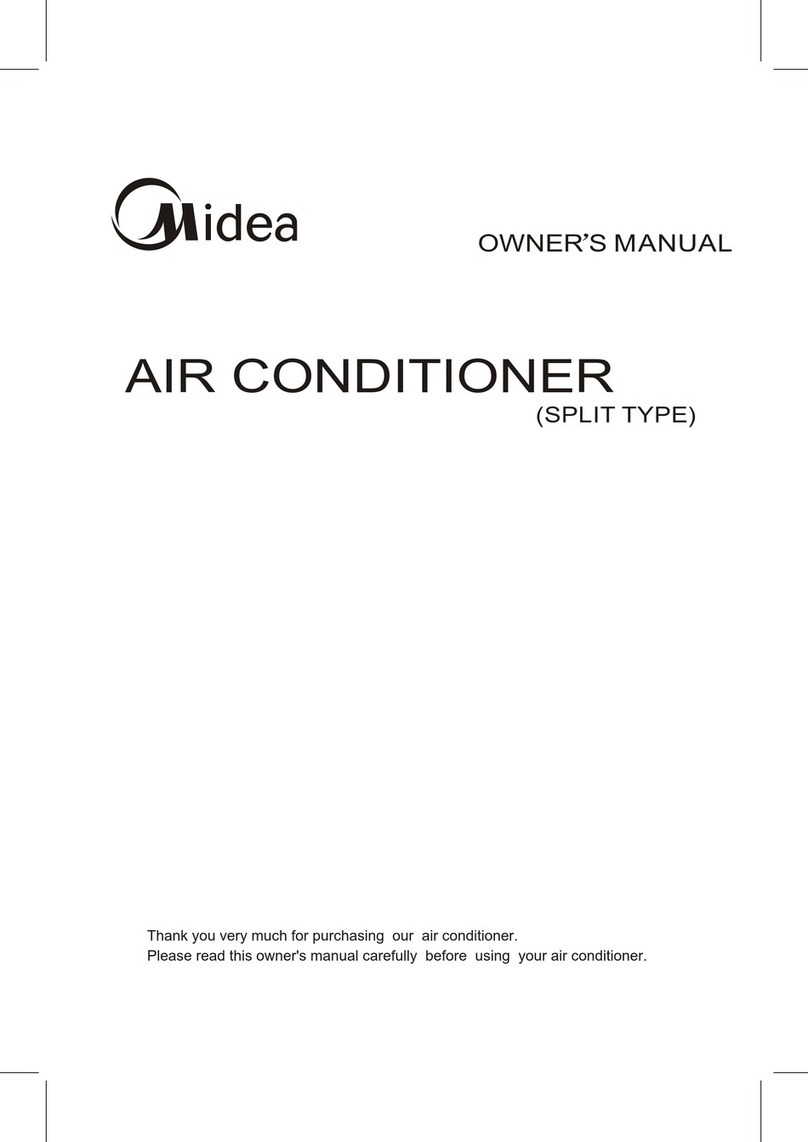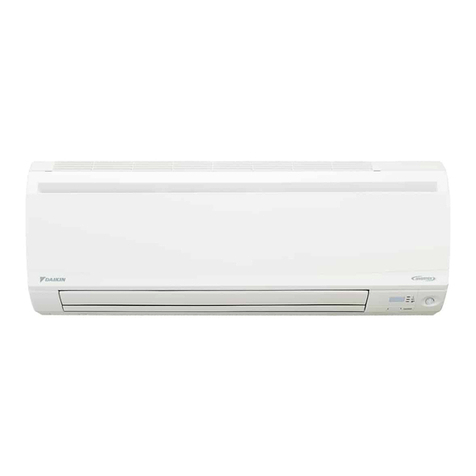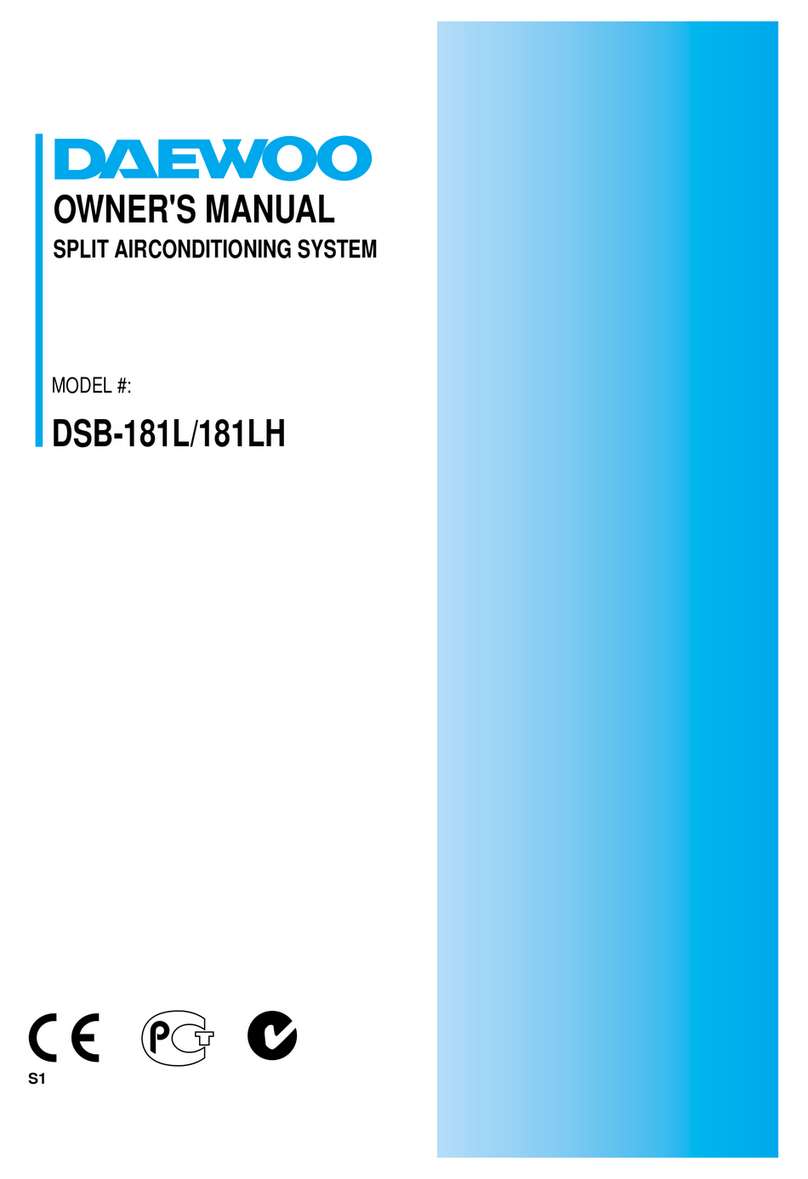Rolls-Royce Silver Cloud II User manual

~,
Air
Conditioning
System
Manual

AIR CONDITIONING
(REFRIGERATION)
Printed in Great Britain
by
William Hodge & Chilver Limi1ed, London

PREFACE
The
primary purpose
of
thi~ Manual is to provide the
refrigeration engineer with information necessary to enable him
to service and maintain the Rolls-Royce Refrigeration System.
The Manual will also be
of
great assistance to
the
motor
car
engineer wishing to familiarise himself with the function and
position
of
the various components.
Contained herein is a description
of
the system and
comprehensive instructions for the maintenance, dismantling
and
assembly
of
each unit, together with the necessary service
procedure. All special tools required to carry
out
service opera-
tions are listed and illustrated.
Although all information provided within the Manual was
correct when going to print, additions or modifications may
subsequently be necessary. These will be brought
to
the notice
of
the reader by means
of
Service Bulletins,
and
it is recom-
mended that a note be made in the appropriate Section
of
the
Manual, referring to the latest Bulletin.
Advice
and
assistance regarding maintenance
and
servicing
problems will always be available
on
application to the Service
Department
at
Pym's Lane, Crewe; all such enquiries should
be accompanied by the chassis number
of
the car.

AIR CONDITIONING
REFRIGERATION
UNDERWING
UNIT

INTRODUCTION
The underwing air conditioning system fitted to Standard Steel
Saloon Rolls-Royce Silver Cloud II
and
Bentley S.2 motor cars
provides de-misting, de-frosting,
car
heating
and
ventilation.
Alternatively, a comprehensive underwing refrigeration system,
providing a wide range
of
heating
and
cooling conditions, can
be installed at the customer's request.
Whilst servicing
of
the
standard
heating
and
de-misting
system may be undertaken with confidence by
the
normal
service engineer,
it
must be appreciated that correct main-
tenance
of
the refrigeration system will be better effected by a
specialised refrigeration engineer.
Special equipment
and
precautions are necessary when
un<lenaking
scrvidng
and
overhaul
operations
and
it
should
be
always
remembered that
the
refrigerant
circulation system is
sealed
and
pressurised.
Thus
join
ls
should not
bl!
disturbed
unnecessarily as
the
system must be discharged prior to
breaking any joint, unless this
is
protected by service valves.
The Refrigeration System, although
an
optional extra, is in
fact not an isolated unit, but a large system carefully integrated
into the design
of
the motor car. The electrical wiring, in most
cases, is combined in th~ main wiring looms
and
the individual
mechanical
and
electro•mechanical control units have been
installed in positions promoting simplicity
of
operation
and
the
facilitation
of
servicing.

AI/ enquiries should be addressed
to:-
ROLLS-ROYCE
LIMITED
Pym's Lane
Crewe
Cheshire
Telephone:
Crewe
55155
Telegrams:
"ROYCRU,
CREWE"
T.S.D. Publication 123
Printed in England

CONTENTS
DESCRIPTION SECTION C.l
OPERATING
THE
SYSTEM SECTION C.2
ELECTRICAL
COMPONENTS . . SECTION
C.3
COMPRESSOR, CONTROL VALVES AND ANCILLARY
UNITS . . SECTION
C.4
MAINTENANCE
SECTION
C.5
SERVICING
. . SECTION C.6

INDEX
Description
To
remove
and
fit
16
Operating
the
system
5 Receiver ..
18
Maintenance
Electrical
components
Schedules
..
21
Actuators
..
9 Every 2,500 miles
21
To
adjust
10
Every 5,000 miles
21
Blower motors
13
Every 10,000 miles
or
annually
21
Evaporator change-over relay
12
Servicing
Lower airstream switch
..
8 Charging the system
28
Magnetic
clutch
-compressor II Checking for leaks 29
Rear
window de-mister relay
12
Discharging the refrigerant
26
Resistances -blower motors
13
Evacuating the system
27
Solenoid valves II Fault diagnosis
23
Thermostatic switches
..
9
Air
delivery
24
Upper airstream switch
..
7
Fault
location
24
The
compreMor,
control
valves
and
ancillary
unil.8 Pressure tests
26
Compressor
IS
Refrigerant circulation
24
Fault
diagnosis
15
Superheat test
..
26
Lubricant
17
Importance
of
chemical stability
23
Oil level -
lo
check
17
Sealing
of
components
23
r--,
~
Shal\
seal -to replace
17
Precautions
to
be observed
23
-
To
purge the
air
18
Exposure to refrigerant
23
al
' To remove
and
fit
IS
First-aid
treatment
23
....
M
r--, Condenser
18
Right-hand front
wing
-
to
remove
29
0
v.i
Drier
19
Special tools required
23
i,..;
Expansion valves
19
Sweeping the system
27
Flow
control
valve 20 Underwing
unit
-to
remove
30
Magnetic clutch
..
15
To
fit
30

F
RESH
WMM
OR
C
OO
L
AIR
TO
CAR INTERIOR
P.ECIR
C
ULA
T
EO
WARM
OR
COOL
AIR
TO
REAR
COMPARTMENT
RE
CIRCULATED
WM
M
OR
COO
L
AIR TO F
RONT
COMPARTM
EN
T
REC
IRCULATI
NG
AIR
INTA
KE
FILTER
BLOWER
HOTOR
EXPANSION VALVE
SOLENOIDE VALVE
Fig,
l '
The
air
condiliomn8
sy•ten:,
CONDENS
EP.
FLOW
CO
NTP.
OL
VA
LVE
I '
HE
ATER
FL
AP
F
LAP
ACT
UA
TO
RS
/
EV
A
POR
ATOR
MA
TRIX
EVAPORATOR MATR
IX
F
RE
SH AIR -
RECIRCULATED
AIR
-

Rolls-Royce &
Bentley-------
Air Conditioning
Sy.stem
Manual
SECTION
C.l
DESCRIPTION
The function
of
the
Rolls-Royce
Air
Conditioning
Unit
is
to
maintain
the
car
interior
temperature
and
humidity
at
a comfortable level
in
all climatic
conditions.
The
unit
is
divided
into
two
parts
-
the
fresh
air system,
and
the recirculatory system; these
PHIAL
~
EV
APORATOR MATRIX
TEMPERATURE
CO
NTROL PHIAL
-4===
/
EVAPORA
TO
R
MA
TR
IX
L.P. VAPOUlll D
H.
P.
VAPOUR •
H.P.
LIQUID
•
VALVE
~
SOLE
NOI
D VALVE
VALVE
/
SOLENOID VAL
VE
may
be
operated
independently or
together
in
order
to
produce
the
desired condition.
The
fresh
air
s
ystem
introduces
heated,
cooled
or
ambient
temperature
air
into
the
car
interior
;
the
re-
circulatory system draws air from
the
car interior,
conditions
it,
and
re-introdu
ces it.
C
ON
D
ENS
ER
~
I
COMPRESSOR
FLOW
co~
VALVE
ORI~
es
,
Ft1,
2
Dla«r•m
of
refrigerant
circ11l•tion
P
age
1

Air
Conditioning
Sy.stem Manual
-------
Rolls-Royce & Bentley
------------
The
main
advantage
of
this feature is that
although recirculation enables the air conditioning
system to operate more effectively, the
simultaneous introduction
of
fresh
air
provides
adequate
ventilation, permitting the
car
to
be
driven with
the
windows closed.
In
countries where humidity
is
high, the unit
will
extract
a large
proportion
of
moisture from
the air;
if
necessary,
the
heater may
be
used
in conjunction with the refrigeration system to
provide warm, dry air when the atmosphere is
cool
and
damp
.
Fine
gauze .filters incorporated in the recircula-
tion
and
fresh air intakes (see Fig.
1)
, prevent
the ingress
of
grit
and
other foreign particle
s.
The
refrigeration
sys
tem
operates
on
a cyclic
principle: after being compressed
in
the com-
pressor, the refrigerant passes
to
a condenser and
then
in
liquid
form
to
a valve where
it
expands
and
then evaporates in a matrix before returning
to the compressor.
During evaporation,
the
gas absorbs heat from
the air
passing
over
the
matrix surface.
The
air
thus enters the
car
at
a reduced temperature, also
at
reduced humidity, since a proportion
of
the
water va
pour
in
the air will condense during the
cooling process
and
drain away through drain
holes provided.
The system
is
charged with Freon
12
refrigerant
(Dichlorodifluoromethane) circulated
by
the com-
pressor.
The
compressor is driven
via
a magnetic
clutch by Vee belts from the coolant pump pulley.
The
compressor
delivers refrigerant
to
the
condenser mounted in front
of
the engine radiator
matrix, where
the
gas is condensed to liquid.
A series
of
pipes incorporating
re
ceiver, drier,
solenoid valves
and
expansion valves connects the
condenser to the evaporator unit
s.
Page2
H
IGH
PRESSURE SER.VICE V
AL
VE
2
LOW
PR
ESS
UR
E SERVICE
VALVE
CO
MPRESSOR
OIL
Fl
ll
ER
PLUG
IMPORTANT:
Ref
er
to co
mpr
essor
deta
ilr
for
instructions regarding the
removal
of
this
plug
.
Fig.
3 Compre&&or
in
po@ition
The
refrigerant
is
atomised in the expansion
valves before entering
the
evaporators, where the
resultant pressure
drop
permits
the
liquid to
vaporise
ar;id
so absorb
heat
from
the
air
passing
through
the matrices.
Air
is ducted to the evaporators by two systems:
From
the air
intake
situated
at
the
front
of
the
right-hand
wing, fresh air is ducted along inside
"'
0
.....

------------
Rolls-Royce
&
Bentley-------
Air
Conditioning
System
Manual
the wing
and
boosted, by means
of
a blower
motor, through the upper evaporator matrix
and/or
the top half
of
the heater matrix.
The
air
is delivered
into
the saloon through the capping
rail adjustable outlets
and
the windscreen
de-misting slots.
The recirculating air is ducted from the air
intake, situated behind the right-hand front seat,
and
b~osted,
by
means
of
a blower motor,
through the lower evaporator matrix
and
the
lower half
of
the heater matrix.
It
then enters the
saloon via the cross duct under the facia, the
adjustable
duct
under
the
front
picnic tray,
and
the
duct
on
the left-hand side
of
the scuttle.
To
prevent
the
temperature
of
the
air
passing
through the evaporator falling below freezing
point
and
the system becoming blocked by the
formation
of
ice, a thermostatic switch is fitted
to
each matrix:
and
is used in
conjunction
with the
solenoid valves to control the
flow
of
refrigerant.
If
both
solenoid valves are closed, the refrigerant
is
by-passed from the condenser back to the com-
pressor through the
flow
control valve.
The
con-
trol valve is adjusted to maintain a minimum
pressure
of
2 lb./sq. in. in
the
low pressure side
of
the system. The thermostatic switches control the
minimum temperature
of
the evaporators and
must
not
be
~et
below 2"C., otherwise icing may
occur.
Page3

LOWER
AIRSTREAM
SWITCH
FEED
FR.OM
COOLANT
TEMP,
INDICATOR
.....-11
,I
l ~cl
) 8
~5
7
UPPER
l
wr',
:
1\
AI
RSTREAM
---
-te--
:i;iel
.
193
SWITCH
~ ,
' , i 8
FRESH
AIR
BLOWER
MOTOR
RESISTANCE
-
DISTRIBUTION BOARD -
TO
REAR
WINDOW
DE·MISTER
I;;.
::
~ERMINAL STIii -
---...:•.;.•
Io
o o o
".I.
RECIRCULATING
All\6LOWE
~ 7
~
<
rr===============(._J====:::!.1
11
I~
....
.....
~
DE-tt1STl:R
...
L
CROSS
DUCT
,,,~,o;w
j ~
J~
I
~
~·
rll-
---
-------
-~
,-....
SOLENO
\::'-=
aoiii,,,/..i,,_
.....
I
~
'I,
VAL.YES
(,......
L..
___
R_E_A
c:.
R
____
....;.
LO_O.:..M
______
..J (OWER- ' -
l
..
-
Fig.
"
Wii·ing
diagram
-
Air
conditioning
M:Y81nn
.,.,.-
REC
IRCULATING Al
l\
RESISTANCE
I ~NGINE
LOOM
COHPRESSOR
CLUTCH -
HEATER
-
FLAP
ACTUATOR
FRESH
· ~
FLAP ACTUATOR
TRANSFER
DUC
T
THERMOSTAT
....
~
•
WATER
TAP
.--
ACTUATOI< ,.
·~
__!
E
~r.:i~~~-.1
.__
"
----=.1.:i
I
~:::r-"I
.,
'"'------
R.H. VALANCE LOOM
~
f===i'
) l
1
·-
-
FRE
SH
AIR BLOWER MOTOR
Bl1B
L06lR/£rL ·cnn.
(')
~
""(
-·
..
..,
~
l'D
n
3 0
:i
~
Q.
~
Q
-.
:i
0
C:
:i
-.
Q
:i
-
OQ

s
0\
-
o:i
I
------------
Ro/ls-Royce
&
Bentley
-------
Air
Conditioning
System
Manual
SECTION
C.2
OPERATING THE SYSTEM
The system
is
controlled by two switches mounted
on
the facia board
and
marked
'UPPER'
and
'LOWER'.
The
'UPPER'
switch controls the fresh air system
and
regulates the air entering the saloon from the
adjustable vents
on
either side
of
the capping rail
and
from the windscreen de-misting slots. This
switch has seven positions -four positions clock-
wise which control the heating system, and three
positions anti-clockwise which control the
refrigeration.
To obtain the desired condition when operating
the refrigeration, the switch must
be
rotated anti-
clockwise.
In the first position the evaporator flap will be
fully open and the heater flap fully closed; the
water tap will be closed
and
the blower motor
operating
at
medium speed. This results in normal
ambient
air
enteri'ng the saloon.
In
the second position both the evaporator flap
and
the
heater flap will be fully open; the water
tap will be closed, the compressor operating and
the blower motor running
at
medium speed. The
result
is
a mixture
of
ambient
and
refrigerated air
passing from the top half
of
the heater matrix and
the upper evaporator unit.
In the third position the evaporator flap will be
fully open, the heater flap will be fully closed, the
water tap will be closed, the compressor operating
and the blower motor at medium speed. This
results
in
cold air entering the saloon via the
upper
evaporator.
If
the
knob
of
the
'UPPER'
switch is pulled out
whilst
turned
to any
of
its positions,
the
blower
motor
operates
at
full speed.
The
'v;>WER'
switch controls the recirculating
system
and
has
five
positions.
Three
positions
clockwise control the heating system
and
the two
positions anti-clockwise control the refrigeration
system.
In
the
first position anti-clockwise
the
water
tap
will be closed, the compressor operating and
the blower motor at medium speed. This results
in cold recirculated air entering the saloon via the
lower evaporator.
In
the second position anti-clockwise the water
tap will be closed, the compressor operating and
the
blower
motor
at
full speed. This results
in
recirculated air
of
minimum temperature entering
the saloon.
Page 5

----------
- - Rolls-Royce &
Bentley--
- -
--
-
Air
Conditioning
System
Manual
SECTION C.3
ELECTRICAL COMPONENTS
UPPER
AIRSTREAM SWITCH
This switch controls
the
heater
and
evaporator
flap actuators, the fresh air blower motor, the
compressor clutch
and
the water tap actuator.
The switch utilises eight angular positions -the
vertical
or
OFF
position, four positions clockwise
and
three positions anti-clockwise.
In
all seven operating positions, with the switch
knob
'in',
the
fresh
air
blower
motor
operates at
medium speed.
When the switch knob is pulled outwards, all
seven conditions
are
duplicated but with
the
blower motor operating .at full speed. This
is
achieved by the provision
of
a
contact
sleeve
at
the end
of
the switch spindle. This sleeve connects
two fixed
contacts
when the
knob
is pulled out-
wards, thereby completing a new circuit by-
passing the resistance.
The
main
switch mechanism consists basically
of
five
sets
of
moving contacts which rotate when
the control
knob
is
turned. Lobes
on
these con-
tact plates
'make'
and
'break'
with eleven sets
of
fixed contacts spaced
around
the
arc
of
travel
of
the contact Jobes.
A numbered disc is attached to the rear
of
the
switch for terminal identification, the
key
to which
is as
follows:-
Terminal Number
1 Water
Tap
'Leak'.
2
Evaporator
Flap
Closed.
3 Supply.
5 Heater Flap t Open.
6 Heater Flap Fully Open.
7 Water
Tap
Closed.
8 Heater Flap Closed.
9 Compressor Clutch 'In'.
10
Evaporator Flap Fully Open.
11
Blower Motor
Medium
Speed.
12
Blower Motor Full Speed.
13
Evaporator Flap t Open.
14
Evaporator Flap t Open.
Switch
positions
1st
clockwise
Evaporator
Flap
Heater
Flap
Water
Tap
Blower
Motor
FULLY
OPEN
CLOSED
LEAK
POSITION
MEDIUM
SPEED
Providing
Normal
ambient
air
flow at
Medium Speed.
(Heater
Matrix warming in
readiness for
2nd
position.)
2nd clockwise
Evaporator
Flap
Heater
Flap
Water
Tap
..
Blower
Motor
!
OPEN
f
OPEN
LEAK
POSITION
MEDIUM
SPEED
Providing
Mixed flow
of
ambient
and
warm
air.
3rd clockwise
Evaporator
Flap
Heater
Flap
Water
Tap
..
Blower
Motor
J
OPEN
f
OPEN
LEAK
POSITION
MEDIUM
SPEED
Providing
As
above, but air
of
increased
temperature entering the car.
4th clockwise
Evaporator
Flap
Heater
Flap
Water
Tap
..
Blower
Motor
CLOSED
FULLY
OPEN
LEAK
POSITION
MEDIUM
SPEED
Providing
Maximum
air
temperature
permitted
by
coolant
leak.
N.B. Knob pulled fully
out
in
any
position-
blower motor operates
at
FULL
SPEED.
Page
7

Air
Conditioning
System
Manual
-------Ro/1$-Royce
&
Bentley------------
1st
anti-clockwise
Evaporator
Flap
Heater
Flap
Water
Tap
..
Blower
Motor
FULLY
OPEN
CLOSED
CLOSED
MEDIUM
SPEED
Providing
Air
of
ambient
temperature
entering the car.
2nd anti-clockwise
Evaporator
Flap
Heater
Flap
Water
Tap
..
Compressor
Blower
Motor
FULLY
OPEN
FULLY
OPEN
CLOSED
OPERATING
MEDIUM
SPEED
Providing
Ambient
and
cold
air
flow via the
upper
heater
and
upper evaporator matrices.
3rd anti-clockwise
Evaporator
Flap
Heater
Flap
Water
Tap
..
Compressor
Blower Motor
FULLY
OPEN
CLOSED
CLOSED
OPERATING
MEDIUM
SPEED
Providing
Air
of
minimum
temperature
entering the car via the upper evaporator
matrix.
N.B.
If
the
switch knob is pulled out, the blower
motor operates
at
FULL
SPEED.
LOWER AIRSTREAM SWITCH
This switch
controls
the recirculatory blower
motor, the water tap actuator and the compressor
clutch.
Six positions are utilised -the vertical
or
OFF
position, three positions clockwise
and
two posi-
tions anti-clockwise.
The
construction
and
operation
of
the
mechanism
is
similar
to
that
of
the
upper
air-
stream switch except that no 'pull-out' mechanism
PageS
is
provided
for
blower
motor
full
speed
-full
speed is only obtained in position three clockwise
and
position two anti-clockwise.
Lobes
on
four sets
of
moving contacts complete
circuits with combinations
of
the nine sets
of
fixed
contacts.
A numbered disc is attached to the rear
of
the
switch to assist terminal identification; the key
to
these numbers
is
as
follows:-
Terminal Number
l Recirculation Blower Motor Full Speed.
2 Recirculation Blower Motor Medium Speed.
3 Supply.
4 Water
Tap
'Leak'.
5 Supply from Upper Airstream Switch No. I
Terminal.
7 Water
Tap
Closed.
8 Supply from Upper Airstream Switch No. 7
Terminal.
9 Compressor Clutch 'In'.
11
Water
Tap
Open.
Note: The system will
not
provide warm fresh
air
and
cold recirculated air simultaneously.
If
the
lower
airstream
switch is
in
a 'cold'
position
(anti-clockwise)
the
water
tap
remains
closed for all positions
of
the upper airstream
switch, either clockwise
or
anti-clockwise.
If
the
Jower
airstream
switch is 'off'
or
in
position I clockwise, the
upper
airstream
switch
selects water
tap
leak
for all clockwise positions.
If
the lower airstreamswitch
is
in positions 2
or
3
clockwise, the upper airstrearn switch selects water
tap
open for all clockwise positions.
Switch
positio,u
1st
clockwise
Water
Tap
..
Blower
Motor
LEAK
POSITION
MEDIUM
SPEED
Providing
Warm
recirculated air.
2nd
clock
wise
Water
Tap
..
Blower
Motor
OPEN
MEDIUM
SPEED

- -
----------
Rolfs-Royce &
Bentley-------
Air
Conditioning
System
Manual
Providing
Recirculated
air
of
increased
temperature.
3rd'clockwise
Water
Tap
Blower
Motor
OPEN
FULL
SPEED
Providing
Recirculated
air
of
maximum
temperature.
1st
anti-clockwise
Water
Tap
..
Compressor
Blower
Motor
CLOSED
OPERATING
MEDIUM
SPEED
Providing
Cold recirculated air entering the
car
via
the
lower
evaporator
matrix.
2nd anti-clockwise
Water
Tap
..
Compressor
Blower
Motor
CLOSED
OPERATING
FULL
SPEED
Providing
Recirculated
air
of
minimum
temperature
entering
the
car
via
the
lower
evaporator matrix.
THERMOSTATIC SWITCHES
The Cartridge
Thermostat
consists
of
two
silver contacts.attached to, but insulated
from,
two special nickel steel members
of
low expansion
co~fficient, mounted
under
tension in a seamless
drawn brass tubular shell.
Changes in
temperature
cause
the
shell
to
expand
or
contract, subjecting the steel contact
supports
to
changes
of
tension, thereby causing
the contacts
to
•make'
or
'break'.
Two
thermostats
are
incorporated
in the
system,
each
controlling
one
of
the solenoid
valves which regulate the supply
of
refrigerant to
the evaporator matrices. When the temperature
of
the
air
leaving the matrices falls to a level a little
above freezing point; the flow
of
refrigerant
is
cut
off,
in
order
to
prevent
the
matrices becoming
blocked by ice formation.
Adjustment
of
the cut-off
point
is effected by
varying
the
tension
in
the
nickel steel members
by means
of
a vernier screw which is accessible
when the thermostat rubber end cover
is
removed
(see Fig.
5).
Setting
the
switch
should
be
attempted
only
with the aid
of
a power source and indicator light.
Random
operation
of
the setting screw, without
positive indication
of
the 'make'
or
'break'
of
the
contacts, may strain the internal assembly.
A locking clamp is provided to ensure that the
setting
remains
undisturbed
by vibrations,
and
should be adjusted so that the vernier screw may
be
turned
without
undue
strain; this
should
be
carried
out
before final adjustment
of
the switch,
since tightening
of
the locking screw after adjust-
ment may alter the setting.
Care
should
be exercised in handling the
thermostat, since it
is
the outside shell which
forms the operating element
and
distortion
of
this
shell may affect the operation.
ACTUATORS
The heater flap, evaporator
flap
and
heater water
tap
actuators
are
identical
units,
consisting
of
a
small electric motor driving through a reduction
gear train. The shaft carrying the final gear in the
train also carries a
contact
disc which has a
portion removed; this disc conveys current to the
motor
via
any
one
of
four fixed
contacts,
when
the
circuit
is
completed
by
the
upper
or
lower
airstream switch action.
Operation
of
the motor causes the disc to
rotate
until the
gap
in the disc reaches
the
con-
tact, thus breaking the circuit.
Attached to the
end
of
each actuator gear shaft
is
a crank lever. These crank levers are connected
by
links
to
sfmilar levers fixed
to
the
water
tap
spindle
and
to
extensions
of
the
heater and
evaporator
flap spindles. The extension spindles
protrude through the actuator mounting platform,
and
flexible couplings transmit the drive, through
holes
in
the valance, to the flap spindles. Rubber
sleeves are provided under the wing to protect the
flap driving mechanism.
Page9

Air
Conditioning
System
Manual
-------
Rolls-Royce
&
Bentley
--
-----------
Fig. 5
Thermo81.ltic
swilch
The
water
tap
actuator
is
situated
low
down
at
the
forward
end
of
the
right-hand
valance
(see
Fig
. 6).
The
heater
and
evaporator
flap actuators
are
mounted
together
on
a single platform midway
along
the
valance,
adjacent
to
the
forward
brake
fluid reservoir (see Fig. 7)...
Actuators
-
to
adjust
Whenever
the
underwing
unit
or
the
wing has
been
removed,
it will be
necessary
to
check
and
possibly
adjust
the
actuator
setting. This should
be
carried
out
after
the
wing
has
been
refitted.
The
procedure
to
be
adopted
is as follows,
noting
that
instru
c
tions
2, 3
and
4
do
not
apply
if
the
wing
only
has
been
removed:-
l.
Slacken
the
four
bolts which
clamp
the
crank
levers
to
the
extension
spindles
and
gear
shafts,
also
slacken
the
two
Allen
grubscrews
securing
the
collars
to
the
extension
spindles.
2.
Remove
the
single
nut
a
nd
washer
secur-
ing
the
forward
end
of
the
mounting
plat-
form
to
the
valance
and
slacken
the
two
rear
securing
nuts.
3.
Move
the
forward
end
of
the
mounting
platform
away
from
the
valance
and
insert
the two coupling
tubes
through
the valance
Page
JO
hole
s,
locating
them
on
the
driving
dogs
on
the
flap spindles.
4.
Insert
the
extension
spindle
dogs
into
the
slots in
the
coupling
tubes
and
se
cure
the
mounting
platform
to
the
valance.
5.
Push
the
extension
spindles
fully
into
the
coupling
tubes
and
tighten
the
two
crank
lever
clamping
bolts
on
to
the
extension
spindles.
6.
Slowly
withdraw
the
extension
spindles
about
n;
in
.
and
tighten
the
Allen
grub-
screws
to
lock
the
collars
against
the
end
faces
of
the
bearing
tubes
.
7.
Detach
the
two
crank
levers
from
the
gear
shafts
and
rotate
the
extension
spindles
by
means
of
their
crank
arms
.
The
spindles
should be free to rotate
through
90°. Move-
ment
through
a
larger
angle
indicates
that
the coupling tubes are
not
engaged with
the
dogs
on
the
spindles
and
this
should
be
rectified.
8.
Ensure
that
the
upper
and
lower
airstream
sw
it
c
hes
are
in
the
OFF
position
. Switch
on
the
ignition
for
approximately
30
seconds
to
allow
the
actuator
motors
to
Fi8
, 6
Water
tap
and
actuator

------------
Rofls-Royce
&
Bentley-------
Air
Conditioning
System
Manual
rotate
to the fully closed position.
It
will
then
be
necessary
to
adjust
the
two
actuators
separately as follows: -
Evaporator
flap
actuator
I.
Rotate
the extension spindle anti-clockwise
(when viewed over the left-hand wing) until
resistance is encountered.
2.
Slightly slacken
the
crank
lever
clamping
bolt
and
rotate
the
crank
lever until
it
slopes forward
and
upward
at
45°.
3. Place
the
gear
shaft
crank
lever loosely
in
position
on
the
gear shaft.
4.
Adjust
the
position
of
the extension crank
so
that
when the gear shafi crank is rotated
clockwise
on
the
shaft,
resistance
is en-
countered
for a few degrees
to
each
side
of
the
fully
rearward
position. (This indi-
cates
that
the flap is being pressed tightly
into
its fully closed position).
Tighten
the
clamping bolt to lock
the
extension spindle
crank.
5.
Rotate
the
gear
shaft
crank
to
the
fully
rearward
end
of
its
stroke
(i.e.
when
the
gear
shaft
crank
and
the
connecting
link
are parallel) then tighten the clamping bolt.
Heater
flap
actuator
I.
Rotate
the
extension spindle clockwise
(when viewed over the left-hand wing) until
resistance is encountered.
2. Slightly slacken
the
crank
lever
clamping
bolt
and
rotate
the
crank
lever until
it
slopes 60°
forward
of
the
vertical
down
-
ward
position.
3. Place
the
gear
shaft
crank
lever loosely
in
position
on
the gear shaft.
4. Adjust
the
position
of
the
extension spindle
crank
so
that
when
the
gear
shaft
c
rank
is rotated clockwise
on
the shaft, resistance
is
encountered
for a few degrees
to
each
side
of
the
fully
rearward
position.
1
HEATER
FLAP
ACTUATOR
2
EVAPORATOR
FLAP
ACTUATOR
Fig. 7 Flap
aetuarors
Tighten
the
clamping
bolt
to
lock the
extension spindle crank.
5.
Rotate
the
gear
shaft
crank
to
the
fully
rearward
end
of
its
stroke
(i.e.
when
the
gear
shaft
crank
and
the
connecting
link
are parallel), then tighten the clamping bolt.
Operate the switches and visually check that the
actuators are
functioning
correctly.
MAGNETIC CLUTCH -
COMPRESSOR
See Page
15
for description
and
procedure.
SOLENOID VALVES
Model . . Danfoss EVJD-6 (Stamped '
F'
on the
valve body).
The
solenoid valves
control
the
flow
of
refrigerant
to
the expansion valves which serve the
two evaporator matrices.
The
lower end
of
the
movi,ng core has a rubber
insert which seats against a nozzle protruding
upwards
from
the
body
of
the
valve.
When
the
circuit is
open,
the
core
seat
is held
against
the
nozzle
by
a
spring-loaded
plunger
which is
situated in the core so as to extend from the upper
face
and
contact
the
blind
end
of
the
so
len
oid
bore (see Fig. 8).
Page
11

Air
Conditioning
System
Manual
-------
Rolls-Royce
&
Bentley-------------
·--~------
1
RE
TAINING
SCREW
2 I
DENTIFICATION
PLATE
3 SOLENOID
AND
CASING
4 VALVE CHAMBER COVER
5 SECURING SCREWS
6
MO
V
ING
CORE
7 DIAPHRAGM
AND
NOZZLE
B SEALING
RING
9 VALVE
BODY
Fig.
8 So!P.nold
valve
-
exploded
view
When
the coil is energised,
the
core
is
drawn
upwards
and
the
refrigerant
flows
through
two
small
holes
in
the
rubber
diaphragm
which
mounts
the
nozzle, leaving via the nozzle orifice.
Since the total area
of
the two inlet holes in the
diaphragm
is less
than
the
area
of
the nozzle
Page 12
orifice, the resultant pressure
drop
in the chamber
causes
the
diaphragm
to
lift
from
its seating,
allowing the refrigerant to flow
from
the annular
inlet groove,
under
the
diaphragm,
to
the
outlet
port, thus by-passing the two inlet holes
and
the
nozzle orifice and permitting full flow.
A leak
from
the
valve casing will
probably
be
due
to
inefficient sealing;
renew
the
rubber
'O'
ring between
the
valve
body
and
the valve
chambercover, refit
the
cover
and
tighten
the
six
retaining screws.
A leaking valve may be caused either by a
faulty
diaphragm
or
a
damaged
core rubber
insert.
Icing
of
the
evaporator
may
be
caused
by a
leaking valve
or
incorrect
operation
due to a
faulty
or
wrongly set thermostat.
THE REAR WINDOW DE-MISTER RELAY
In
order
to
prevent
heavy
loading
of
the
battery,
resulting
from
the
refrigeration
system
and
the
rear
window
de-·
mister
unit
working in
opposition, a relay is
incorporated
in the system
to break the circuit for the rear window
de
-mister
whenever refrigerated air is being passed into the
car, i
.e
.
upper
airstream switch -positions 2 and
3 anti-clockwise; lower
airstrcam
switch-
positions 1
and
2 anti-clockwise.
The relay
is
mo
unted
on the uppeI' right-hand
side
of
the
bulkhead
.
THE EVAPORATOR CHANGE-OVER RELAY
The
leads
from
the
number
nine
terminals
of
the
upper
and
lower
airstream
switches leave the
left-hand valance
loom
and
enter
the
WI
and
C3
terminals
of
the change-over relay mounted at the
centre
of
the
bulkhead
.
Fro
m these terminals,
leads
pass
through
the
right-hand
valance
loom
to
the
cross
duct
and
transfer
duct
thermostat
s
which
control
the so
len
o
id
valves.
From
the
C2
terminal a
lead
feeds
the
compressor
clutch
via
the rear window de-mister relay.
The
purpose
of
the change-over relay is to
provide a feed
to
the. compressor clutch from
"'
0
....
Other manuals for Silver Cloud II
1
This manual suits for next models
1
Table of contents
Popular Air Conditioner manuals by other brands

Lennox
Lennox KVCK 22E Installation, operation & maintenance manual
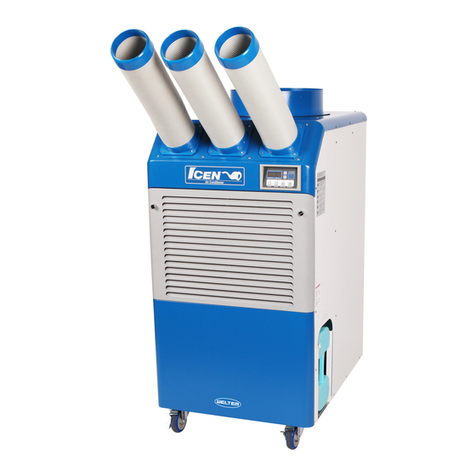
Weltem
Weltem Icen WPC-9000 owner's manual
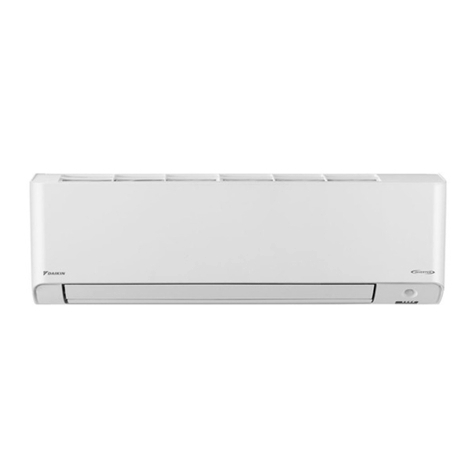
Daikin
Daikin FTXM20W2VMA Operation manual

AIREDALE
AIREDALE Artus ARC66-21PE1H-7 Technical, Installation, Maintenance and Commissioning Manual
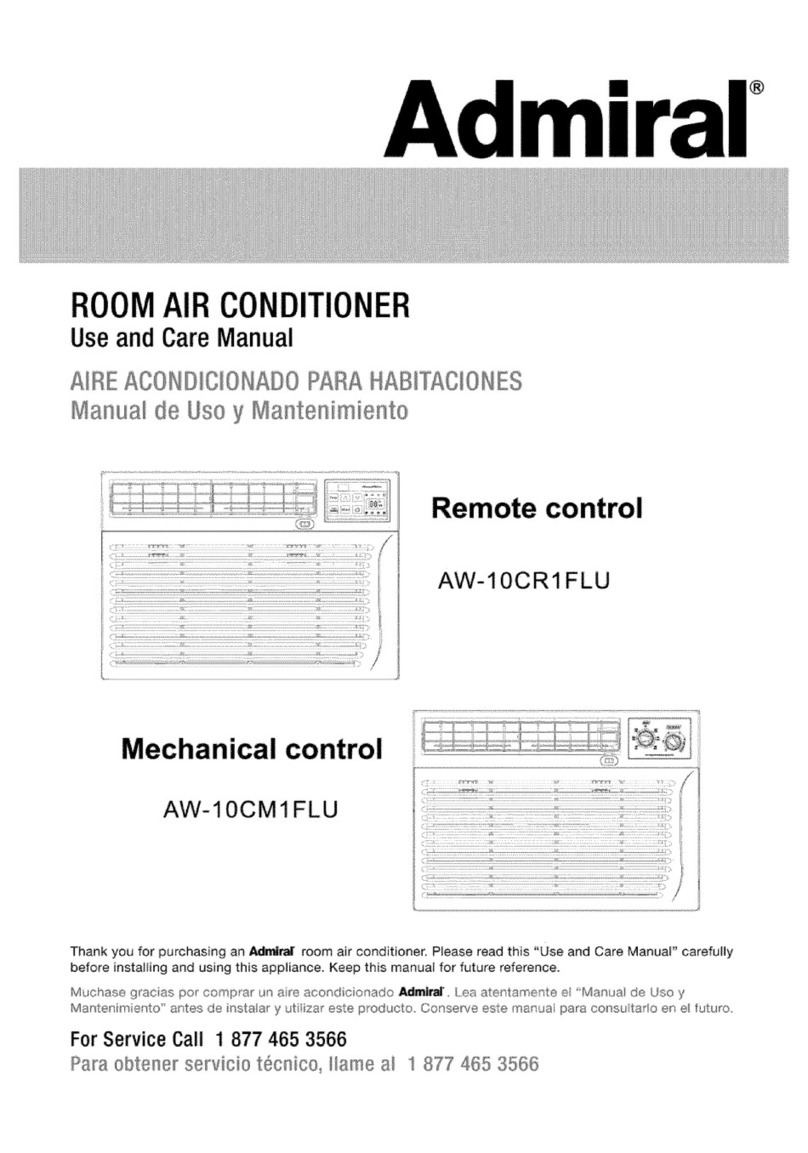
Admiral
Admiral AW-10CM1FLU use and care manual
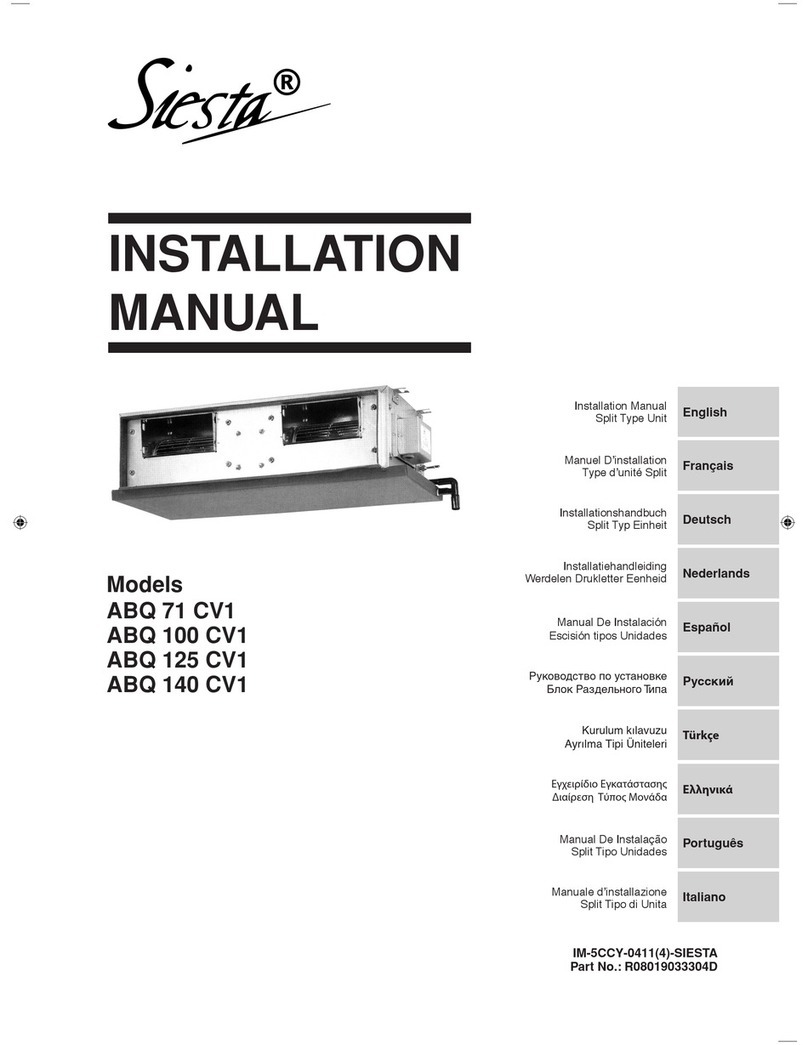
Siesta
Siesta ABQ 100 CV1 installation manual

INVENTOR
INVENTOR U5MRSL32(2)-18 installation manual
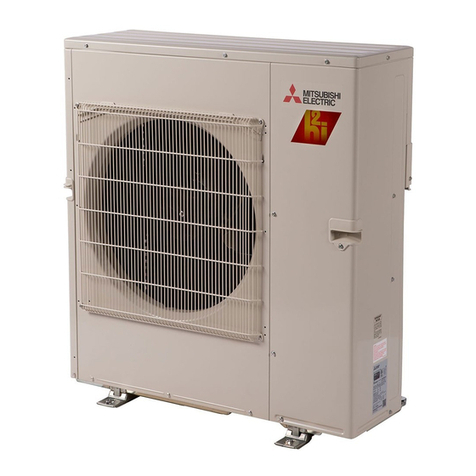
Mitsubishi Electric
Mitsubishi Electric MXZ-2C20NAHZ2 installation manual

Mitsubishi Electric
Mitsubishi Electric PEFY-P06 NMSU-E Operation manual
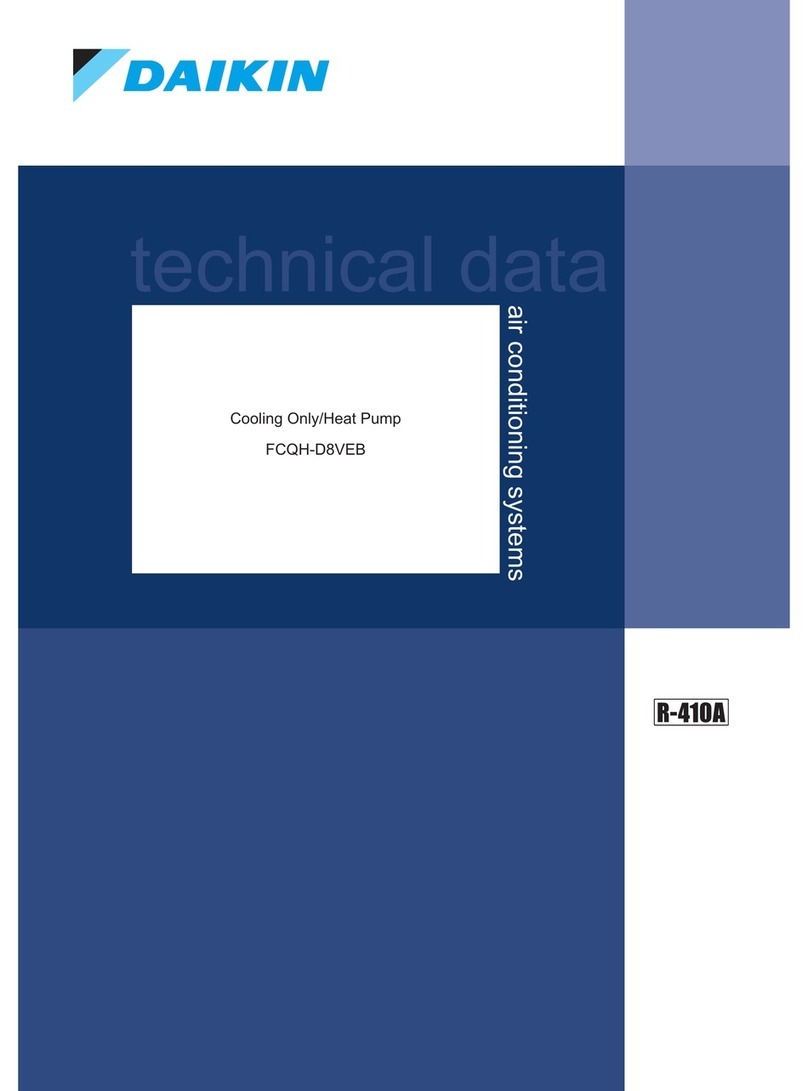
Daikin
Daikin FCQH71D8VEB Technical data

LG
LG HSN18APX owner's manual

Mitsubishi Electric
Mitsubishi Electric PURY-WP-YJM-A Data book

